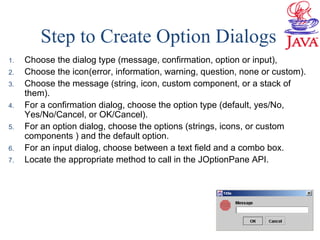This document provides an overview of Swing components for creating graphical user interfaces in Java. It discusses top-level containers like JFrame and JDialog, general purpose containers like JPanel and JScrollPane, basic controls for user input like JTextField and JButton, components for displaying information like JLabel and JTable, and various layout managers including FlowLayout, BorderLayout, GridLayout, BoxLayout, and GridBagLayout. It also covers using borders with components and implementing listeners for text fields. The document is intended to teach what is needed to create full-featured GUIs with Swing.








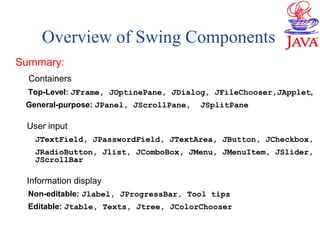
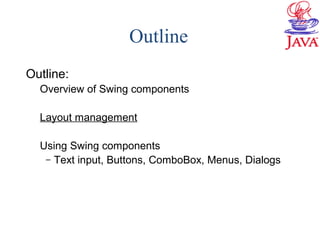














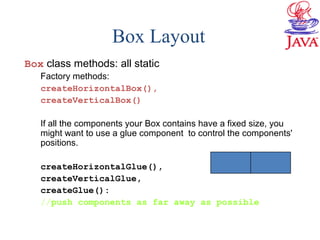















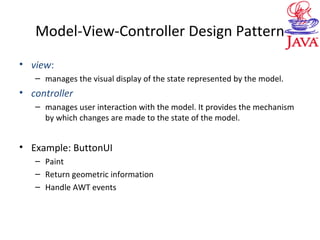































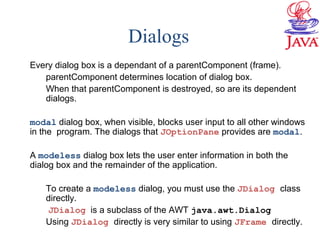

![Option Dialogs
Every Dialog has: an icon, a message , one or more option buttons.
icon type: ERROR_MESSAGE, INFORMATION_MESSAGE, WARNING_MESSAGE,
QUESTION_MESSAGE, PLAIN_MESSAGE
Message can be:
A String: Draw the string
Icon: Show the icon
Component: Show the component
Object[]: Show all objects in the array, stacked on top of each other.
Option buttons are:
DEFAULT_OPTION
YES_NO_OPTION
YES_NO_CANCEL_OPTION
OK_CANCEL_OPTION
Return value: An integer representing the chosen option
or a string that the user supplied or selected](https://image.slidesharecdn.com/10swing-160928113148/85/java-swing-75-320.jpg)
